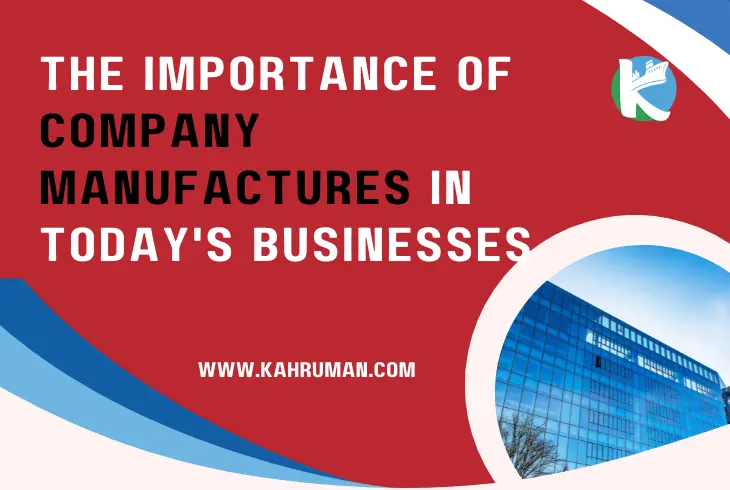Mastering Fire Safety: Your Comprehensive Guide to Fire Extinguishers
In a world where unexpected challenges can arise, ensuring the safety of your home or workplace becomes paramount. Among the various tools at our disposal, understanding the intricacies of fire extinguishers is a crucial aspect of maintaining a secure environment. In this comprehensive guide, we delve into the ABCs of fire extinguishers, unravel the differences between DCP and ABC extinguishers, and explore the critical factors in selecting, siting, and using these life-saving devices. Join us on a journey to master fire safety, providing you with the knowledge and confidence to tackle unforeseen fire emergencies effectively. Trust Kahruman, your partner in safety, as we navigate through the essentials of fire extinguishers for a secure and protected environment.
Decoding ABC Fire Extinguishers: Your Ultimate Guide
Understanding ABC Fire Extinguishers
What is an “ABC” Fire Extinguisher?
Fires fall into four groups – A, B, C, and D. A-type involves common combustibles, B-type deals with flammable liquids, C-type tackles electrical fires, and D-type handles flammable metal fires. An “ABC” fire extinguisher covers A, B, and C fires. Notably, a “BC” fire extinguisher may not be effective on A-type fires like burning paper. The rare D-type fires aren't commonly encountered, and D-type extinguishers are uncommon for home use.
Deciphering the Numbers 2A 10BC:
The numbers before the letters indicate the extinguisher's effectiveness. A 2A 40BC extinguisher can put out four times more of a B-type fire (flammable liquid) than a 2A 10BC extinguisher.
Class ABC Fire: Essential Classifications
Class A Fire Extinguishers: Combustible Materials
Wood, Paper, Cloth, Rubber, Plastic
Class A extinguishers target fires involving ordinary combustibles. The numerical rating signifies water equivalency, e.g., a 4-A rated extinguisher equals 5 gallons of water.
Class B Fire Extinguishers: Flammable Liquids
Alcohol, Gases, Oil, Ether, Paints
For flammable and combustible liquids like gasoline, alcohol, and oil-based paints, B-type extinguishers are designed. The numerical rating indicates coverage in square feet.
Class C Fire Extinguishers: Electrical
Short Circuits, Overloaded Outlets
Class C extinguishers handle fires related to electrical malfunctions, such as short circuits. No numerical size rating is assigned.
Class D Fire Extinguishers: Metals
Potassium, Sodium, Titanium, Magnesium
Primarily used in research labs and industrial settings, D-type extinguishers combat fires involving combustible metals.
Class K Fire Extinguishers: Combustible Cooking Liquids
Fat, Grease, Oil
Class K extinguishers are deployed in commercial kitchens, tackling fires from cooking fats and oils.
Additional Insights on Fire Classes
Class F Fires: Combustible Cooking Fats
Fires involving fats, such as those in deep fat fryers, fall under Class F.
Electrical Fires:
Symbolized by an electric spark, electrical fires are caused by faulty electrical equipment.
Multipurpose Extinguishers:
Many portable extinguishers are rated for multiple fire classes. For instance, an ABC-rated extinguisher handles ordinary combustibles, flammable liquids, and electrical fires.
In your quest for fire safety, understanding the ABCs of fire extinguishers ensures you're well-prepared for any blaze. Equip yourself with the right knowledge, and remember, when in need, Kahruman is your trusted partner for quality fire safety solutions. Explore our extensive collection at kahruman.com and make safety a priority in your space.
Mastering Fire Extinguishers: A Comprehensive Guide
Unveiling the ABCs of Fire Extinguishers
What is fire extinguisher DCP vs. ABC?
ABC signifies an extinguisher certified for A, B, and C type fires. A covers common fuels like wood, B deals with flammable liquids, and C handles charged electrical fires. DCP stands for Dry Chemical Powder, the actual fire suppressant inside the extinguisher, making it a type of ABC extinguisher.
ABC vs. CO2 Fire Extinguisher: Decoding the Differences
- ABC extinguisher is effective for ordinary fires (A, B, C). Leaves a fine dry chemical agent.
- CO2 extinguisher (BC class) isn't effective for class A fires (ordinary combustibles). The gas dissipates, leaving no residue. Not ideal in windy conditions. Requires closer proximity to the fire.
Color Coding of Extinguishers
- Water extinguishers are signal red.
- Others are predominantly signal red, with a label, band, or circle covering 5% in a second color indicating contents.
- Green-coded extinguishers (Halons) are illegal, except for specific exceptions like aircraft and military use.
Choosing Fire Extinguishers: Key Considerations
- For home kitchens, a water mist extinguisher or wet chemical extinguisher is suitable.
- Commercial organizations need a survey for the right extinguisher types and quantities.
- Trustpilot reviews can help choose a reliable service company for extinguisher maintenance.
Selecting and Using Fire Extinguishers
Selecting an Extinguisher
- Choose between rechargeable and disposable extinguishers.
- Select the largest size you and your family can handle. Follow the manufacturer's instructions.
- Store at least one extinguisher on each floor, with a combination ABC extinguisher for versatile use.
Siting Fire Extinguishers: Essential Tips
- Sited on escape routes, easily reachable, visible, away from extreme temperatures.
- Height considerations: 1m from the floor for heavier units, 1.5m for smaller units.
- Proper labeling when different types are sited together to prevent confusion.
How to Use a ABC Fire Extinguisher: The PASS Method
- P – PULL the pin.
- A – AIM low at the base of the fire.
- S – SQUEEZE the lever slowly and evenly.
- S – SWEEP the nozzle from side to side.
Additional Safety Tips
- Keep the room's exit to your back for a quick escape.
- If the fire becomes hard to control, leave immediately.
- Check extinguishers monthly; replace or recharge immediately after use.
- Evacuate and call; let professionals determine if it's safe to re-enter.
Ensure your space is safeguarded by understanding the nuances of fire extinguishers. Trust Kahruman for quality fire safety solutions. Explore our extensive collection at kahruman.com to prioritize safety in your environment.
Conclusion: Empowering You with Fire Safety Mastery
As we conclude this comprehensive guide to fire extinguishers, our mission is clear – to empower you with the knowledge and confidence needed to navigate the realm of fire safety effectively. We've unraveled the distinctions between DCP and ABC extinguishers, explored the nuances of selecting and siting extinguishers, and provided step-by-step insights into their proper use.
Remember, the mastery of fire safety involves more than just possessing the right tools; it's about understanding their capabilities and deploying them with precision. Trust in Kahruman, your ally in safety, as we prioritize securing your environment.
By embracing the insights shared within this guide, you not only enhance your ability to protect yourself and others but also contribute to the collective safety of your community. As you embark on this journey towards fire safety mastery, explore our extensive collection at kahruman.com, where quality meets reliability.
Stay informed, stay safe, and let the knowledge acquired here be your shield against the unforeseen challenges of fire emergencies. Your safety is our priority, and with this guide, you are well-equipped to face the unexpected with resilience and confidence










